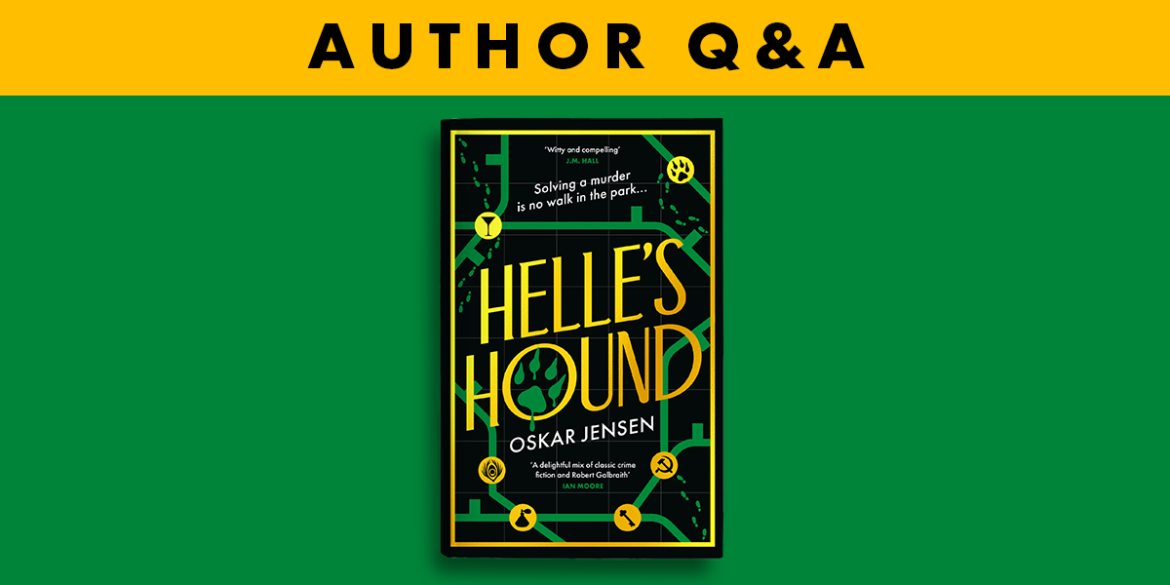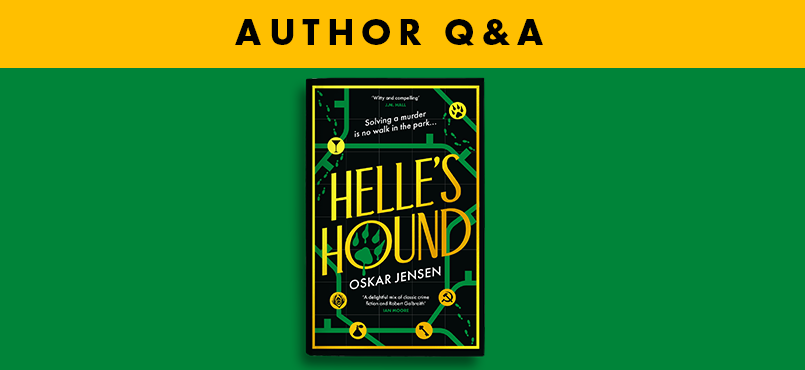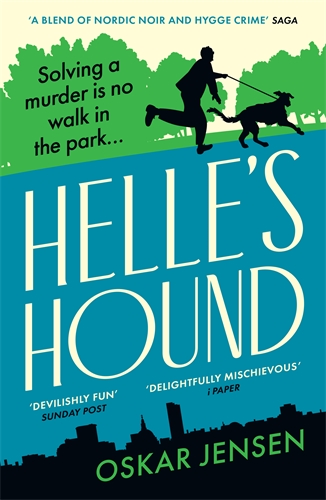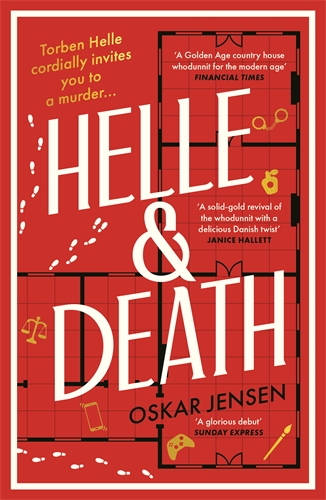30 January 2025
Torben Helle returns in this new novel from the highly acclaimed author of Helle and Death.
A dead art historian. Cold War skulduggery.
A reluctant Danish sleuth. And an extremely hungry dog.
‘A delightful mix of classic crime fiction and Robert Galbraith’ – IAN MOORE
‘Witty, compelling and an intriguing fiendish murder’ – J.M. HALL
‘Brilliantly entertaining and fiendishly fun’ – PHILIPPA EAST
Helle’s Hound is the highly anticipated return of Torben Helle, set several months after Helle and Death. Why did you choose to write a sequel – was there unfinished business after the events at Bastle House?
I’d actually say it’s more like the reverse – Helle and Death is the prequel, the origin story, to the adventures of Torben Helle, amateur detective. In that sense it’s quite unusual: from Marple to Wimsey, we’re rarely privy to the character’s first taste of deduction, but encounter them fully formed and at the height of their powers. Torben’s still a way off that in Helle’s Hound but he has a murder case, of a sort, already accidentally under his belt, and fancies himself quite capable of solving another. Leyla and everyone else disagree with this, of course. But I rather fear these brushes with death may have created a crime-fighting monster of an art historian…
No longer stuck in an isolated country manor house, Torben spends this book running around the streets of London. What was it like to revisit old characters in a new, more open setting?
Curiously, my own mother claims to find the recurring characters much more sympathetic this time around – Torben especially. I think this has a lot to do with seeing them in their natural environment. It only struck me quite late on how unusual this is in ‘classic’ detective fiction with amateur sleuths. If you’re writing a police procedural, it’s all in a day’s work and you get to observe your protagonists’ daily routines, home and love lives. But in the golden age style – as in Helle and Death – we normally meet in exceptional circumstances, on holidays and in country houses. We go to the crime, the crime doesn’t come to us. So in a sense, I’ve now had murder crash Torben and his friends’ ordinary lives as well as their swanky reunion, and it’s been fascinating. We get a much more rounded picture of their personalities, and no one’s under the same intense, claustrophobic pressure of being stuck in a murder scene. It makes for a freeing, expansive experience and I’ve enjoyed it enormously. Hopefully readers, too, will share this sense of a more fluid, open, and slightly decadent world…
Similarly, what was it like to create new characters – whether they be suspects, victims or companions – for Torben?
Oh it’s been a total joy! In Helle and Death, everyone was very tightly knit and had a shared backstory, which was compelling and satisfying but a lot of hard work. This time my palette, or my casting remit, could be much broader, especially with a contemporary London setting. I still wanted classic archetypes of the genre, though – bumbling but good-hearted police officers, corrupt politicians, power-hungry careerists, art-world socialites, actors, the great and the not-so-good. To start with these ‘types’ and develop them into rounded individuals was a delight, especially when it came to writing plausible suspects: we don’t spend so long with these characters, so we don’t have to find them sympathetic, they can be deliciously crooked.
At the same time, I needed a heart for the book. In Helle and Death it was peer-group friendships. In Helle’s Hound, it’s the mentor figure, such an important one in academia especially. Dame Charlotte Lazerton is quite a divisive character, it seems, but I absolutely love her and, crucially, so does Torben. Checking in on her regularly gives the book both a moral through-line and a good dollop of outrageousness. She’s definitely been my favourite creation to spend time with. Also, her name is a very nerdy allusion – prizes to all those who can work it out.
Torben’s come into his own in Helle’s Hound, and early readers have been taken by his love for good food, antique furniture and impressive art. What kind of research did you do to make his expertise and appreciation feel authentic?
Precious little, I’ll admit – this was a book in which Torben’s world and my own recent past really began to blur. It’s a homage to the London I came to in my mid-20s, a city that was very good to me for all its expense and hypocrisy. The various restaurants, pubs and institutions in which Torben and Leyla grill their suspects whilst someone else grills their food are either ones I know well or that I’ve long wanted to visit for a special occasion. They haven’t all existed at the same time but then, this is fiction, and I want the reader to be able to enjoy, vicariously, some of my own favourite London experiences.
If his London is, broadly speaking, my London, then the Gustavian furniture and art expertise is a more recent interest of mine, taken to the next level. This rather leads into the next question: Dorothy Sayers created Peter Wimsey at a point when she was very poor, and wanted to give her fictional creation all the nice things she couldn’t have. I’ve more or less done the same, from the impractical sofa to the fancy art-book commission – but the greatest gift I’ve given Torben that I do not possess myself is none of these things: it’s that much rarer commodity – spare time!
You’ve spoken previously about your love for classic Golden Age mystery writers, such as Agatha Christie and Dorothy L. Sayers. Beyond the not-so-subtle reference to Arthur Conan Doyle, what classic writers did you take inspiration from for this book?
You say ‘not-so-subtle’, but the Hound of the Baskervilles nods run deep in this one: from a host of character and place names to major plot events, it’s full-on homage. I liked the idea of taking a rural, Gothic horror and making it an irreverent urban romp. Sayers and Christie are still in the mix too of course, from the Bloomsbury-set stylings of the former’s Strong Poison (and the will they won’t they goings on of the two lead characters), to the home comforts and idiosyncrasies that mark out the London residences of both Poirot and Wimsey. I want Torben’s 24 Little James Street (just round the corner from where Sayers once lived) to be his equivalent of his predecessors’ bijou flats.
Meanwhile I’ve read a lot more, recently, of other golden age writers, from Josephine Tey and Ngiao Marsh to Edmund Crispin and Anthony Berkeley. There’s a bit of all of them in there, largely in the light-hearted satire of London living. Yet if I were to name one mid-century novel that most inspired the comic-yet-serious spirit of Helle’s Hound, it wouldn’t be crime fiction at all, but Iris Murdoch’s giddy and slightly surreal debut from 1954, Under the Net. If you haven’t read it: do so!



